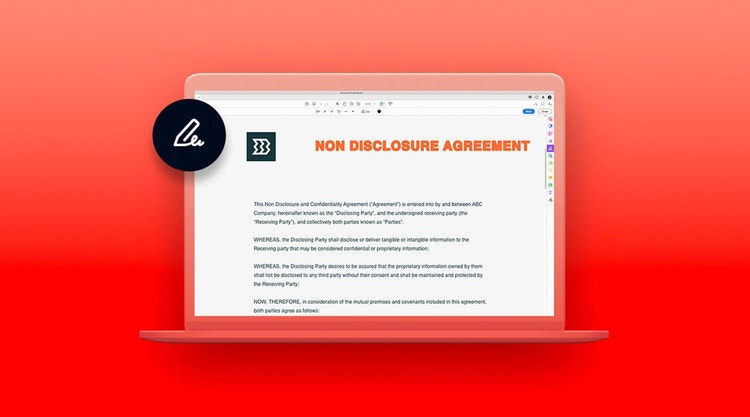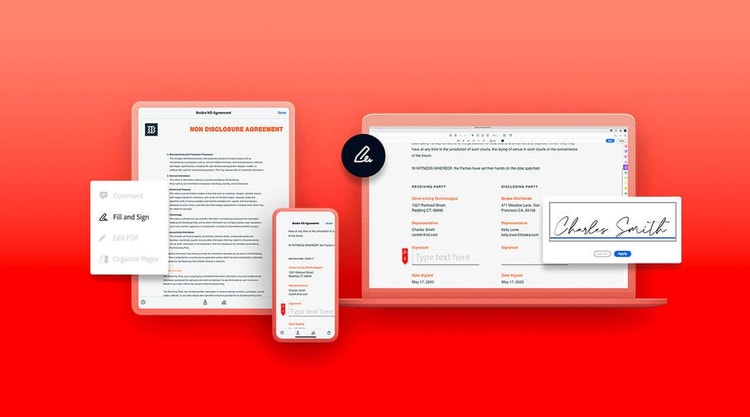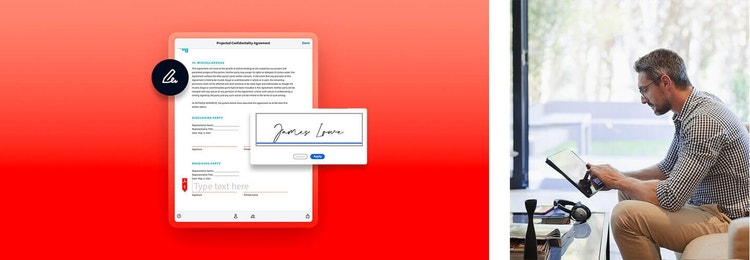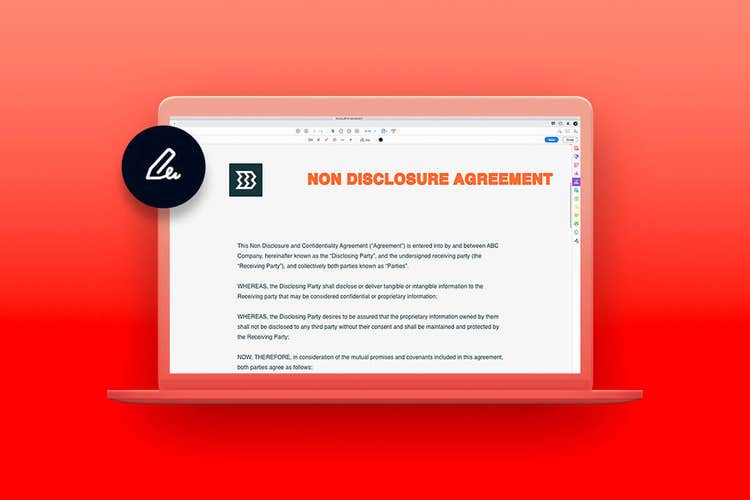Adobe Acrobat
The inside scoop on simple confidentiality agreements.
Find out how to protect sensitive or proprietary information from unauthorized disclosure.

What is a confidentiality agreement?
A confidentiality agreement is a legal contract that ensures the receiver of specific, private information will protect such information. This information could be between business partners, employers and employees or contractors, or businesses and their clients. It could exist in written, graphic, oral, or electronic forms. A nondisclosure agreement is a common type of confidentiality agreement that protects the disclosing party while providing them the ability to pursue legal remedies if the receiver shares the privileged information, but it is not the only kind.

What counts as confidential information?
Confidential information could includes anything the disclosing party (the party sharing the information) does not want made available to the public or competitors. It can include:
- Technical information: This includes trade secrets, inventions, software programs, source code, designs, drawings, formulas, and data.
- Financial information: Business and strategy plans, financial statements, proprietary information, and analyses can all be deemed confidential financial information.
- Employment information: Any information an employee acquires during the course of employment may fall under this category. In addition to trade secrets, new product research, and other proprietary information, employees must maintain confidentiality as it relates to customers’ identities and personal information.

Types of confidentiality agreements.
There are many different types of agreements you can use to protect business information, including:
Unilateral
These are one-way agreements in which one party promises not to disclose information provided by the disclosing party.
Bilateral
These are mutual agreements that require each party to agree to keep the other’s secrets.
Inventor agreement
It’s difficult to bring an invention from concept to market without help, and approval of patent applications can take years. With an inventor agreement, an inventor can share confidential intellectual property with employees or consultants without fear of disclosure.
Nondisclosure agreements (NDAs)
There are many different types of NDAs, including:
- Standard: Protect trade secrets, intellectual property, and other sensitive information.
- Employee: Ensure that employees don’t share business information outside of the company. You can also consider including a non-solicitation agreement to make sure the employee doesn’t take any customers with them if they leave.
- Interview: Protect companies from leaks of sensitive information that the company may have to share with job candidates in the course of interviewing them.

What to include in a confidentiality agreement.
As with any other contract, you should seek legal advice from a legal professional before you finalize any business relationship or before entering into a confidentiality agreement. A confidentiality agreement should include the names and addresses of the parties to the contract. Consider also including:
- Reason for the agreement: Explain why you’re sharing this information.
- The information disclosed: Be specific about the subject matter and what exactly is included in the agreement. Does it cover intellectual property, sales information, customer data, computer code, or tax information?
- Exclusions: Note what information is not covered by this agreement. It might already be public knowledge, or the knowledge the receiver has already acquired legally through another source.
- The receiving party’s responsibilities: Many agreements require the receiver to exercise reasonable precautions against disclosure. They might allow disclosure only after the receiver gets written consent from the disclosing party. You can also require that the receiver only share information with others who have signed NDAs.
- Consequences for disclosure: Explain what happens if the receiver breaches the contract. You can demand the return of the information, promise legal action, and, in some cases, seize the confidential property.
- Limits to the agreement: Outline when the agreement ends. It might be after a specific time period or when the confidential relationship ends.

Be more efficient with digital agreements.
Learn more about how going digital with your agreements can help your business. Starting with confidentiality agreements, German agriculture firm KWS SAAT SE used Adobe Acrobat Pro and Adobe Acrobat to speed up their document processes. “Adobe’s digital document solutions help us master every step on our path to becoming a paperless company. We will see an enormous potential for efficiencies,” says Jens Hittmeyer, the company’s head of Corporate Information Technology.
Novozymes, the world’s largest enzyme producer, adopted the Adobe e-signature solution to smooth the contract creation process. The Novozymes legal department sends and signs approximately 300 contracts per year to multiple signees all over the world. With Acrobat, the company reduced the time it takes to complete a contract by more than 93 percent.
Go digital with Adobe Acrobat Pro to save your business time and money. It’s easy to create a template in Adobe Acrobat using your confidentiality agreement. You can turn your Microsoft Word document of your confidentiality agreement into a PDF, add fields for the receiver to fill out and sign, send it out for e-signature, and track the contract’s progress. Instead of taking days to complete confidentiality agreements, you can get them done in minutes — and get on with your work.
